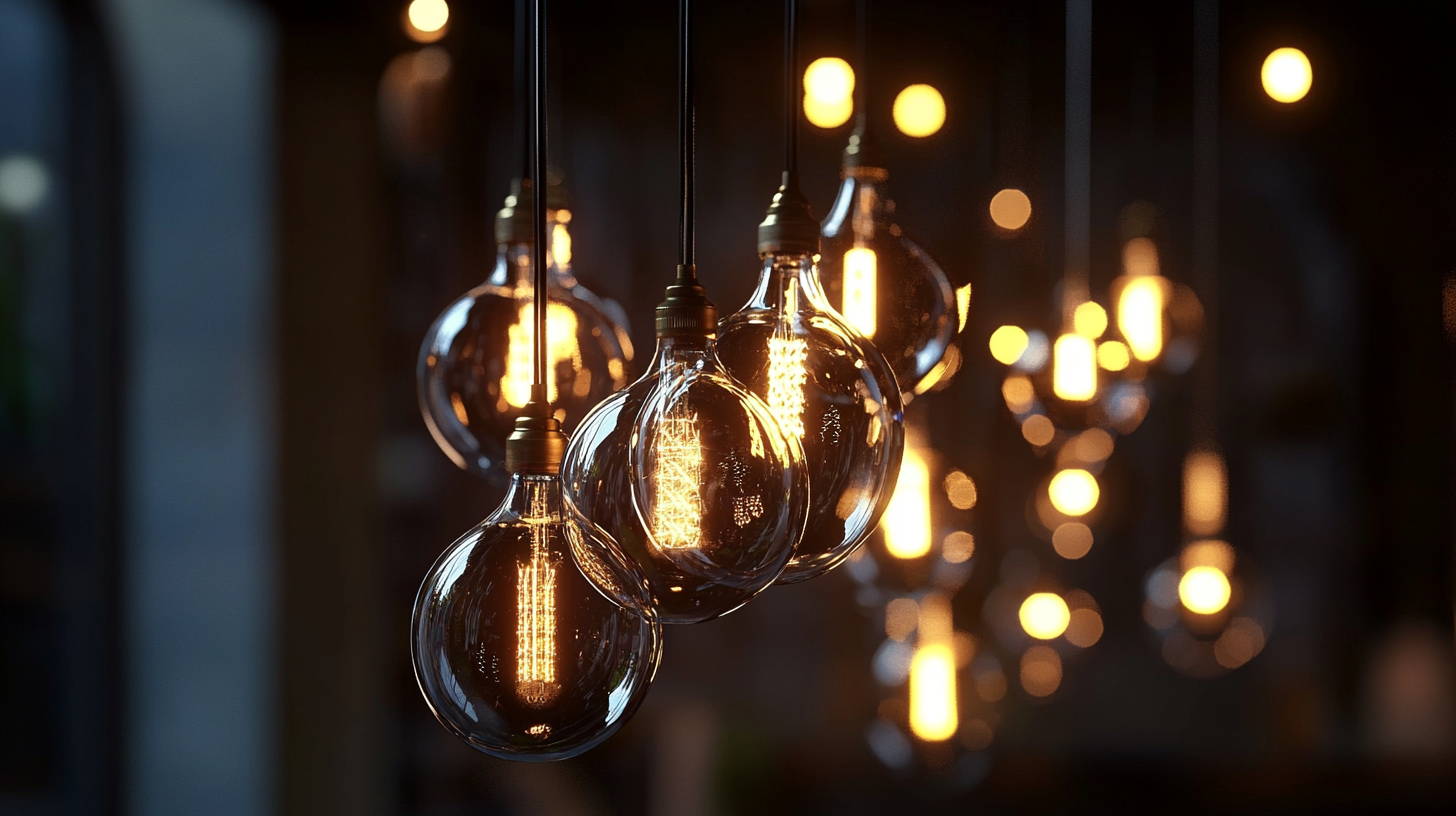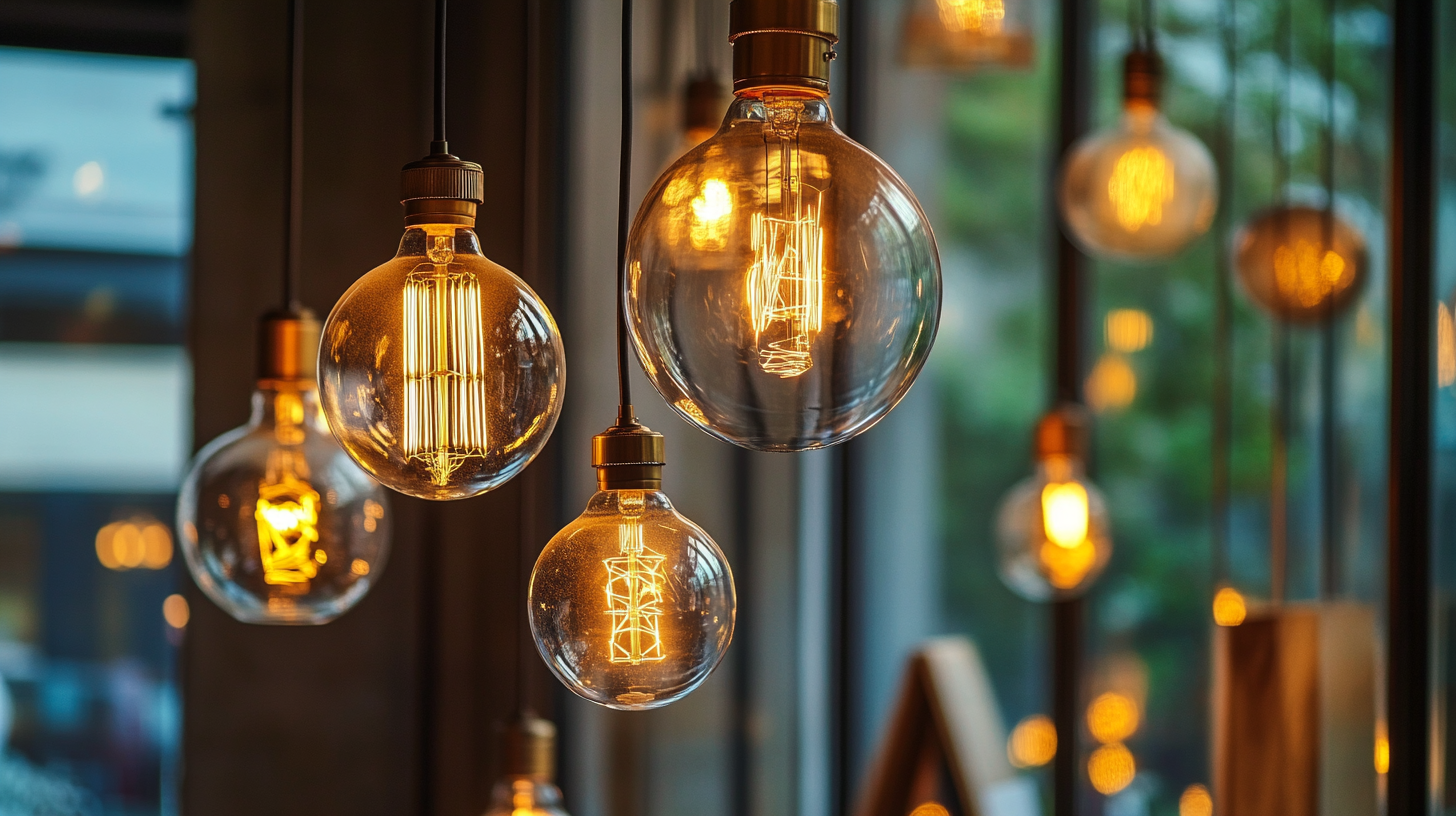
Global Market Analysis for Best Lighting Fixtures Mold Innovations by 2025
In today's rapidly evolving market, the demand for innovative lighting solutions has never been greater, particularly concerning the design and manufacturing of Lighting Fixtures Mold. As we look towards 2025, understanding the global market dynamics and emerging trends in this sector is essential for industry stakeholders. This blog will serve as a comprehensive checklist, highlighting key factors and considerations that influence the landscape of lighting fixture molds. From advancements in materials to sustainable production methods, we will explore how technology and consumer preferences are reshaping the industry.
 Join us as we delve into the critical insights and strategies that will position businesses for success in this competitive market, ensuring they stay ahead of the curve and ready to meet the future demands of lighting design and functionality.
Join us as we delve into the critical insights and strategies that will position businesses for success in this competitive market, ensuring they stay ahead of the curve and ready to meet the future demands of lighting design and functionality.
Key Trends Driving Innovations in Lighting Fixture Molds for Global Markets
The lighting fixture mold industry is experiencing a transformative wave driven by several key trends that are reshaping the global market. According to a recent report by Market Research Future, the lighting fixture market is projected to reach USD 95 billion by 2025, with an annual growth rate of approximately 8%. This robust expansion is fueled by increasing demand for energy-efficient and environmentally friendly lighting solutions. As manufacturers focus on sustainability, innovations in mold design and materials are essential to ensure production efficiency and reduced waste.
Another prominent trend is the integration of smart technology into lighting fixtures. A report by Technavio highlights that the smart lighting market is set to grow at a CAGR of over 22% during the next five years. As smart homes gain popularity, the need for advanced mold designs capable of integrating sensors and connectivity features is becoming crucial. Innovative molds not only support new designs but also enhance the functionality of lighting fixtures, making them adaptable to consumer preferences in a rapidly evolving market.
Additionally, the rise of 3D printing technology is revolutionizing mold production, allowing for unprecedented customization and faster prototyping. According to a study by Wohlers Associates, the 3D printing industry is projected to reach USD 44 billion by 2026, highlighting the potential for significant cost savings and design flexibility. As lighting manufacturers adopt these advanced techniques, the result will be a surge in innovative products that meet market demands while also paving the way for future advancements in lighting fixture molds.
Global Market Analysis for Best Lighting Fixtures Mold Innovations by 2025
This chart illustrates the projected market growth trends for lighting fixtures molds from 2021 to 2025 based on key factors influencing innovation.
Emerging Technologies Transforming the Design and Production of Lighting Fixtures
 The lighting fixtures market is undergoing a radical transformation driven by emerging technologies that are reshaping both design and production. According to a recent report by MarketsandMarkets, the global smart lighting market is projected to grow from $71.66 billion in 2020 to $168.61 billion by 2025, with a compound annual growth rate (CAGR) of 19.0%. This growth is primarily fueled by advancements in LED technology, IoT integration, and sustainable materials, allowing manufacturers to create innovative designs that enhance energy efficiency and user experience.
The lighting fixtures market is undergoing a radical transformation driven by emerging technologies that are reshaping both design and production. According to a recent report by MarketsandMarkets, the global smart lighting market is projected to grow from $71.66 billion in 2020 to $168.61 billion by 2025, with a compound annual growth rate (CAGR) of 19.0%. This growth is primarily fueled by advancements in LED technology, IoT integration, and sustainable materials, allowing manufacturers to create innovative designs that enhance energy efficiency and user experience.
Moreover, 3D printing technology is revolutionizing the production process of lighting fixtures, enabling rapid prototyping and customization. According to Allied Market Research, the 3D printing market for lighting is expected to reach $1.74 billion by 2026, showcasing a CAGR of 23.6%. This level of innovation facilitates the creation of intricate designs that were previously impossible with traditional manufacturing methods. As designers explore biologically inspired shapes and adaptable atmospheres, the market is expected to see an influx of creative and transformative lighting solutions that not only illuminate spaces but also stimulate emotional responses.
Sustainability and Eco-Friendly Practices in Lighting Fixture Manufacturing
Sustainability remains a pivotal focus in the lighting industry as manufacturers strive to innovate and reduce their environmental impact. Recent studies highlight that the global market for eco-friendly lighting fixtures is projected to expand significantly, estimated to reach a market value of approximately $61 billion by 2025. This growth is fueled by rising consumer demand for sustainable products and increasing regulations aimed at reducing energy consumption.
Innovative technologies, particularly in 3D printing, are reshaping the production process for lighting fixtures. The ability to create customized luminaires using sustainable materials not only enhances design flexibility but also minimizes waste, contributing to a circular economy. Furthermore, initiatives such as third-party certification programs for light fixtures that reduce glare and light pollution emphasize the commitment to sustainable practices within the industry. Additionally, incorporating biophilic design principles that utilize recycled materials can enhance both aesthetic appeal and environmental benefits.
The trend towards structural modular lighting systems is another significant development, allowing for versatile configurations that align with sustainable building practices. As the industry evolves, embracing these eco-friendly practices will be essential for meeting both market demands and environmental standards while paving the way for a greener future.
Global Market Analysis for Best Lighting Fixtures Mold Innovations by 2025 - Sustainability and Eco-Friendly Practices in Lighting Fixture Manufacturing
| Year | Market Size (USD Billion) | Growth Rate (%) | Sustainable Product Share (%) | Innovation Index (1-10) |
|---|---|---|---|---|
| 2021 | 30.5 | 5.2 | 15 | 6 |
| 2022 | 32.1 | 5.3 | 20 | 7 |
| 2023 | 34.0 | 5.5 | 25 | 8 |
| 2024 | 36.0 | 5.7 | 30 | 8.5 |
| 2025 | 38.0 | 6.0 | 35 | 9 |
Market Opportunities and Challenges for Lighting Fixture Mold Innovations by 2025
The lighting fixture mold industry is poised for substantial growth by 2025, driven by advancements in technology and increasing consumer demand for energy-efficient solutions. According to a recent market report by Grand View Research, the global lighting market is expected to reach $193 billion by 2025, with mold innovations playing a crucial role in meeting the diverse needs of this expanding market. Key opportunities lie in the integration of smart technologies and sustainable materials into lighting fixture designs, which companies can leverage to differentiate themselves from competitors.
However, the industry faces significant challenges, including regulatory compliance and the need for rapid innovation. Manufacturers must navigate a complex landscape of environmental regulations aimed at reducing carbon footprints, prompting a shift toward eco-friendly mold materials and production techniques. Additionally, as consumer preferences shift towards customizable and multifunctional lighting solutions, companies must invest in research and development to keep pace with these changing demands. According to a report by MarketsandMarkets, the smart lighting market is anticipated to grow at a CAGR of 23% from 2020 to 2025, underscoring the urgency for mold innovations that can accommodate this trend.
Consumer Preferences Shaping the Future of Lighting Fixture Designs and Molding Techniques
 As we look toward 2025, consumer preferences are expected to shape the landscape of lighting fixture designs and molding techniques significantly. According to a report by Grand View Research, the global lighting fixtures market is projected to reach $180 billion by 2025, growing at a CAGR of 6.2%. This growth is largely driven by the increasing demand for energy-efficient and smart lighting solutions, which resonate with the environmentally conscious consumer. Molding innovations are focusing on sustainable materials and advanced manufacturing techniques, enabling more customizable and aesthetically pleasing designs that cater to diverse tastes.
As we look toward 2025, consumer preferences are expected to shape the landscape of lighting fixture designs and molding techniques significantly. According to a report by Grand View Research, the global lighting fixtures market is projected to reach $180 billion by 2025, growing at a CAGR of 6.2%. This growth is largely driven by the increasing demand for energy-efficient and smart lighting solutions, which resonate with the environmentally conscious consumer. Molding innovations are focusing on sustainable materials and advanced manufacturing techniques, enabling more customizable and aesthetically pleasing designs that cater to diverse tastes.
Additionally, the rise of smart home technologies is influencing consumer choices, leading to an uptick in demand for integrated lighting systems that can be controlled via smartphones and voice-activated devices. A report from MarketWatch indicates that the smart lighting segment is estimated to grow from $5.8 billion in 2021 to nearly $16 billion by 2026. This shift is prompting manufacturers to invest in new molding methods that support intricate designs and incorporate smart technology, allowing for greater versatility and enhanced functionality in lighting fixtures. As consumer preferences continue to evolve, the industry must adapt and innovate to meet these new demands.
